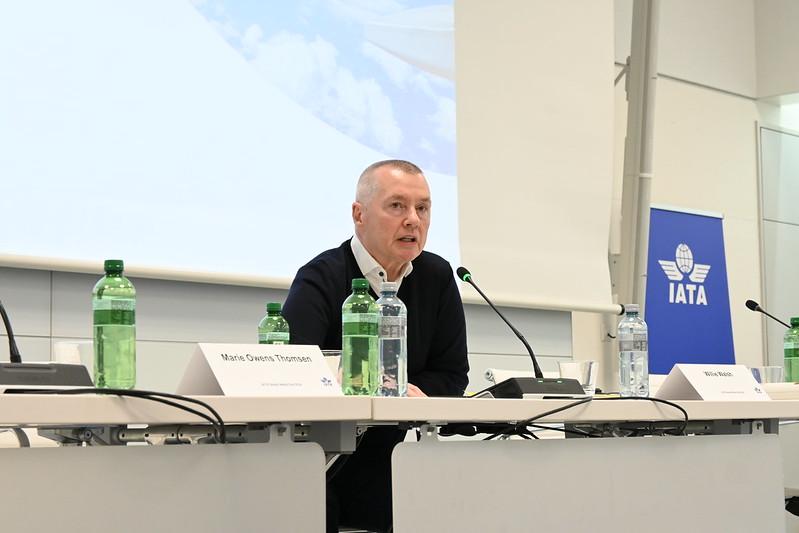
IATA Director General Willie Walsh speaking in Geneva.
GENEVA—IATA plans to look at whether there is evidence of anti-competitive behavior among aircraft manufacturers and the aerospace supply chain, as airlines continue to deal with significant delivery delays and a shortage of spare parts.
“I prefer if we didn’t have to go down that road, but we have been patient for too long,” IATA Director General Willie Walsh said Dec. 10. “IATA can play a significant role in this.”
“Key suppliers appear to be immune from normal competitive dynamics,” Walsh said in an address at the association’s global media day in Geneva. “We are dealing with quasi-monopoly suppliers. There could well be evidence that this is a case of these suppliers being able to abuse their dominant position,” Walsh continued. “They are benefitting from the supply chain issues. There is no evidence that they are resolving this.”
What aircraft and engine manufacturers are doing so far to address the situation is “just not good enough,” Walsh added.
Around 700 aircraft are currently grounded because of engine durability issues and a lack of spare parts, according to IATA estimates. Boeing deliveries have fallen way below original projections because of the production quality issues the company has been dealing with and the recent International Association of Machinists and Aerospace Workers (IAM) strike.
Airbus, too, has been struggling to meet its overall delivery targets. Many of the deliveries that are taking place only happen with significant delays. Engines, cabin interiors and structural components are the main pacing items impacting aircraft production.
IATA has once before been engaged in an investigation into potential anti-competitive behavior by a supplier. It joined a case against CFM International on information sharing with third-party MRO providers in 2016 that had been pursued by some of its members with the European Commission. The issue was eventually settled in 2018.
“Our biggest frustration is the supply chain, aircraft and engines—it is a bigger impediment right now than infrastructure,” Walsh said. “There is no evidence of it getting better.”
Walsh said he doubted by now that the industry was going to be able to get back on track before the end of the decade, creating “a major challenge for the industry.”
The shortage of aircraft is leading to an aging in-service fleet. “We are seeing aircraft being operated that really should be retired,” Walsh said. He was referring to Airbus A340s and A380s, among others, that are being brought back into service. The planned industry growth in 2025 will be “coming at significant additional cost” as airlines are forced to continue operating uneconomical aircraft.
According to IATA, the average aircraft age in 1990 was just over 12 years and it has been at 13.6 years on average since then. In 2024, it moved up to 14.8 years.
“We have been patient, but our patience has run out,” Walsh said. “The situation is unacceptable, [and] insufficient effort has been put into resolving this issue.” He pointed to the cost of aircraft leasing having gone way up, and added, “Engine performance is not near where it should be.”
IATA noted that it estimates 1,254 aircraft deliveries for 2024, down from 1,813 in 2018. The estimated 1,802 forecast for 2025 are “unrealistic,” said Marie Owens Thomsen, the association's chief economist.
The delays are also proving stumbling blocks in the industry's efforts to become sustainable. Average fuel consumption has been unchanged this year at 0.23 liters per 100 available ton kilometers. In the 1990-2019 period, airlines have improved fuel efficiency by 1.5-2% annually.






Comments
My analysis done for a university a few years back found that the #3 aircraft manufacturer in any market (regional, mainline) were never profitable. Even #2 was at best breakeven (McDonnell Douglas).
Airbus and Boeing were both rather equally profitable as both were rather equally #1 in size. Once a manufacturer went below about 35-40% market share they became unprofitable.
That's why only Airbus and Boeing are left in mainline aircraft and only Bombardier and Embraer were left in regionals before Bombardier got the itch to compete with Airbus and Boeing and lost it completely.
Note I'm ignoring China and Russia. Neither are profitable and are being propped up by their government.